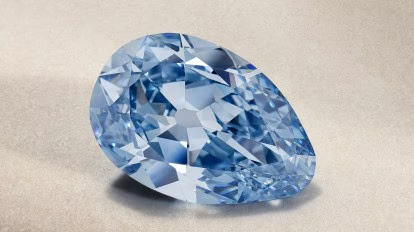- Courses
- GS Full Course 1 Year
- GS Full Course 2 Year
- GS Full Course 3 Year
- GS Full Course Till Selection
- CSAT
- 5 LAYERED ARJUNA Mentorship
- Public Administration Optional
- Online Program
- GS Recorded Course
- NCERT (Recorded 500+ Hours)
- Polity Recorded Course
- Geography Recorded Course
- Economy Recorded Course
- AMAC Recorded Course
- Modern India, Post Independence & World History
- Environment Recoded Course
- Governance Recoded Course
- Science & Tech. Recoded Course
- International Relations and Internal Security Recorded Course
- Disaster Management Module Course
- Ethics Recoded Course
- Essay Recoded Course
- Current Affairs Recoded Course
- ABOUT US
- OUR TOPPERS
- TEST SERIES
- FREE STUDY MATERIAL
- VIDEOS
- CONTACT US
Scientists Found a Bacteria Tricked a Wasp to Get Rid of Its Males
Scientists Found a Bacteria Tricked a Wasp to Get Rid of Its Males
A new study has found that Wolbachia bacteria have manipulated the reproduction of Encarsia formosa wasps to produce only females.
What is Wolbachia?
Wolbachia is a type of bacteria commonly found in insects. It is present in about 6 out of 10 insects, including butterflies, bees, and beetles. Wolbachia bacteria are not harmful to humans or animals.
What does Wolbachia do?
Wolbachia bacteria can manipulate the reproduction of insects to produce more females than males. This is because Wolbachia is present in insect eggs but not in sperm, so females can pass it on to their offspring, but males cannot.
What happened with the Encarsia formosa wasp?
Scientists found that Wolbachia bacteria had manipulated the Encarsia formosa wasp to produce only females. This wasp is important for controlling whiteflies, which are a major agricultural pest. The males were not needed for this purpose, so the Wolbachia bacteria had no reason to allow them to survive.
How did the scientists discover this?
The scientists treated the female wasps with antibiotics, which reduced the amount of Wolbachia bacteria in their bodies. As a result, the wasps started producing males again. This showed that the Wolbachia bacteria were responsible for the lack of males.
What's interesting about this?
The Wolbachia bacteria had acquired a gene from a beetle that helps to promote female development in insects. This is the first time that a bacterium has been shown to use a horizontally transferred gene to manipulate the reproduction of an insect.
What are the implications of this?
If the wasps are unable to produce males, they will not be able to reproduce sexually, which could lead to the extinction of the species. The Wolbachia bacteria may need to find a way to allow some males to survive in order to prevent this from happening.
What are microbes?
Microbes are tiny, single-celled organisms that cannot be seen with the human eye. They are also referred to as microscopic organisms. Microbes account for roughly 60% of all living things on earth.
Key Facts about Encarsia formosa
- The Encarsia formosa wasp is a parasitoid of whiteflies, meaning it lays its eggs on the whitefly nymphs and the larvae that emerge feed on the nymphs and kill them.
- The female wasp is a search and destroy weapon, seeking out whitefly nymphs to lay its eggs on.
The males are not needed for this purpose, which is why the Wolbachia bacteria had no reason to allow them to survive.



